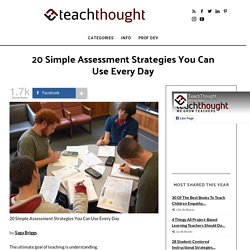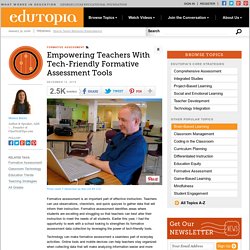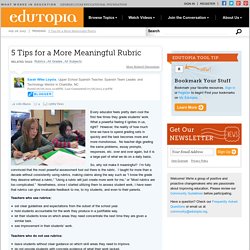

P is for Practicum. Teaching practice, MA TESOL at The New School As part of a Methods course I am teaching at the moment, I am observing teachers-in-training working with especially constituted classes of ‘guinea pig’ students.

Trainers who work on CELTA or DELTA courses, or on other pre- or in-service schemes, will be familiar with the teaching practice (or practicum) set-up. The trainee teachers plan their classes collaboratively, and then take turns to teach a segment of the overall lesson. The trainer (me, in this case) takes a corner seat, mutely observes the succession of ‘teaching slots’, and then conducts a joint feedback session with the trainee teachers either immediately afterwards, or on a subsequent day. The more I do this, the more uncomfortable I feel with the process on at least two counts. First: the logistics. All this would seem to argue against the traditional practicum structure, with the trainer detached from the activity, and the feedback delivered ‘cold’. The milling activity 1. CARB Final. ARIZONA PROGRAM. 20 Simple Assessment Strategies You Can Use Every Day. 20 Simple Assessment Strategies You Can Use Every Day by Saga Briggs The ultimate goal of teaching is understanding.

But sometimes it’s easier to talk than to teach, as we all know, especially when we need to cover a lot of material in a short amount of time. We hope students will understand, if not now then before test time, and we keep our fingers crossed that their results will indicate we’ve done our job. The problem is, we often rely on these tests to measure understanding and then we move on.
Below are 22 simple assessment strategies and tips to help you become more frequent in your teaching, planning, and curriculum design. 22 Simple Assessment Strategies & Tips You Can Use Every Day 1. Avoid yes/no questions and phrases like “Does this make sense?” 2. During the last five minutes of class ask students to reflect on the lesson and write down what they’ve learned. Empowering Teachers With Tech-Friendly Formative Assessment Tools. Formative assessment is an important part of effective instruction.

Teachers can use observations, checklists, and quick quizzes to gather data that will inform their instruction. Formative assessment identifies areas where students are excelling and struggling so that teachers can best alter their instruction to meet the needs of all students. Earlier this year, I had the opportunity to work with a school looking to strengthen its formative assessment data collection by leveraging the power of tech-friendly tools. Technology can make formative assessment a seamless part of everyday activities. Online tools and mobile devices can help teachers stay organized when collecting data that will make analyzing information easier and more meaningful. Choosing the Right Tool With the abundance of technology options available for teachers, it can be intimidating to search for and locate the right one. 4 Easy Tips and Tricks for Creating Visually Engaging Rubrics.
Lisa Yokana recently shared a useful rubric in her post on "Creating an Authentic Maker Education Rubric.

" As this post was making the rounds on social media, Edutopia staff received a number of requests to distribute a modifiable version of her sample maker rubric that educators could adjust to the particulars of their own settings. 5 Tips for a More Meaningful Rubric. Sarah Wike Loyola , Upper School Spanish Teacher, Spanish Team Leader, and Technology Mentor in Charlotte, NC Posted 06/08/2015 12:26PM | Last Commented 07/06/2015 2:30PM Every educator feels pretty darn cool the first few times they grade students' work.

What a powerful feeling it ignites in us, right? However, the reality of how much time we have to spend grading sets in quickly and the task becomes more and more monotonous. No teacher digs grading the same problems, essay prompts, responses, etc. over and over again, but it is a large part of what we do on a daily basis. So, why not make it meaningful? Teachers who use rubrics: set clear guidelines and expectations from the outset of the school year. hold students accountable for the work they produce in a justifiable way. let their students know on which areas they need concentrate the next time they are given a similar task. see improvement in their students’ work.
Teachers who do not use rubrics: Dipsticks: Efficient Ways to Check for Understanding. What strategy can double student learning gains? According to 250 empirical studies, the answer is formative assessment, defined by Bill Younglove as "the frequent, interactive checking of student progress and understanding in order to identify learning needs and adjust teaching appropriately.
" Unlike summative assessment, which evaluates student learning according to a benchmark, formative assessment monitors student understanding so that kids are always aware of their academic strengths and learning gaps. Meanwhile, teachers can improve the effectiveness of their instruction, re-teaching if necessary. "When the cook tastes the soup," writes Robert E. What is a Rubric? Heidi Andrade Rubrics have become popular with teachers as a means of communicating expectations for an assignment, providing focused feedback on works in progress, and grading final products.

Although educators tend to define the word “rubric” in slightly different ways, Heidi Andrade’s commonly accepted definition is a document that articulates the expectations for an assignment by listing the criteria, or what counts, and describing levels of quality from excellent to poor. Rubric Gallery: List of public rubrics: RCampus.